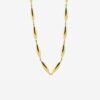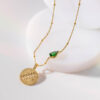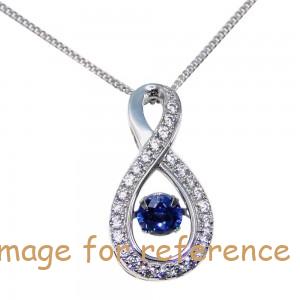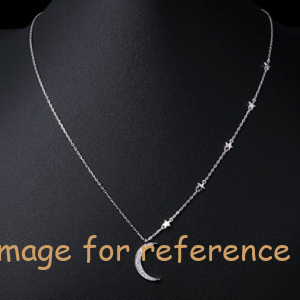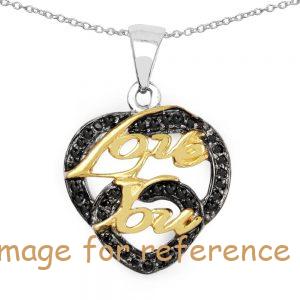Jingingy에서 고품질 피어싱 실버 S925 보석을 생산합니다
OEM/ODM 보석 제조업체 디자인 사용자 정의 보석
시작합시다 : mo@kingjy.com
Jingingy에서 고품질 피어싱 실버 S925 보석을 생산합니다
추상적인
이 문서에서는 고품질 S925 실버 피어싱 주얼리 생산과 관련된 핵심 요소를 탐구합니다.. 소재 선택을 분석하여, 디자인 철학, 제조 공정, 품질 관리, 뛰어난 바디 주얼리 제작에 필요한 전문 기술을 공개합니다.. 연구에 따르면 다음 사항을 엄격하게 준수하는 것으로 나타났습니다. 925 은 순도 기준, 혁신적인 디자인 접근 방식, 정밀한 장인정신, 우수한 제품 결과를 위해서는 포괄적인 품질 보증 시스템이 필수적입니다.. 이 연구는 보석 제조업체에 실용적인 기술 지침과 업계 통찰력을 제공합니다., S925 피어싱 주얼리의 시장 경쟁력 강화.
키워드: S925 실버 주얼리, 바디 피어싱 쥬얼리, 제조 공정, 품질 관리, 쥬얼리 디자인, 925 은순도
소개
현대 주얼리 시장에서, S925 실버 피어싱 주얼리는 독특한 예술적 가치와 착용성으로 인해 큰 인기를 얻고 있습니다.. 고품질 피어싱 주얼리는 정교한 디자인을 보여줄 뿐만 아니라 엄격한 재료 표준과 생체 적합성 요구 사항도 충족해야 합니다.. 이 문서에서는 재료 선택부터 완제품까지 프리미엄 S925 피어싱 주얼리의 전체 생산 과정을 체계적으로 조사하여 중요한 기술적 측면과 품질 보증 방법을 강조합니다.. 업계 종사자들을 위한 전문적인 참고자료로 활용됩니다..
1. 재료 선택 및 준비
고품질 S925 피어싱 주얼리의 기본은 꼼꼼한 소재 선택에 있습니다. 925 은, 다음으로 구성된 합금 92.5% 순수한 은색과 7.5% 다른 금속 (일반적으로 구리), 국제적으로 인정받는 실버 주얼리 표준입니다.. 이 조성물은 내구성을 향상시키면서 은의 바람직한 특성을 유지합니다.. 공급업체는 다음을 통해 은 순도를 엄격하게 검증해야 합니다. X- 선 형광 (XRF) 테스트 규정 준수를 보장하기 위해 92.5% 기준.
또한, 피어싱 쥬얼리가 필요합니다 생체적합성 재료 상처가 치유되는 것과 직접적으로 접촉하기 때문에. 니켈은 엄격히 피해야 합니다. 알레르기를 유발하는 특성으로 인해. 대신에, 다음과 같은 저자극성 대안 금, 백금, 또는 로듐 도금 표면 마감에 선호됩니다.. 보석 설정 (만약 사용된다면) 또한 다음과 같은 자극적이지 않은 재료를 사용해야 합니다. 수술용 티타늄 또는 니오븀 민감한 착용자를 위한.
2. 디자인 철학과 혁신
고급 피어싱 주얼리는 균형을 이루어야 합니다 미학, 기능성, 및 착용성. 디자이너가 고려해야 할 사항:
-
해부학적 적합성: 다양한 피어싱 위치에 맞는 주얼리 (귀, 코, 배꼽, 등.) 특정 모양이 필요합니다, 게이지, 그리고 편안함을 위한 무게.
-
청소의 용이성: 매끄러운 표면과 최소한의 틈새로 박테리아 축적을 방지합니다..
-
모듈성: 상호 교환 가능한 구성 요소로 맞춤화 가능, 소비자 매력 강화.
혁신이 핵심입니다. 자연, 기하학적 패턴, 또는 문화적 모티브 경쟁적인 시장에서 브랜드를 차별화할 수 있음. 미니멀리스트, 경량 디자인 추세이다, 은은한 우아함을 추구하는 소비자를 위한 제품.
3. 제조 공정 및 기술
3.1 주조 및 성형
-
잃어버린 왁스 캐스팅 복잡한 디자인에 일반적으로 사용됩니다., 정밀도 보장.
-
CNC 가공 고정밀 부품에 사용 가능.
3.2 마무리 및 연마
-
손으로 파일링 및 샌딩 연마하기 전에 결함을 제거하십시오.
-
다단계 연마 (거친 연마재부터 미세한 연마재까지) 달성하다 미러 마감.
3.3 표면 처리
-
전기 도금 로듐이나 골드를 사용하여 내구성과 심미성을 높였습니다..
-
산화 처리 고풍스럽거나 검게 변한 효과 만들기.
3.4 보석 설정 (해당되는 경우)
-
마이크로 포장 또는 베젤 설정 날카로운 모서리 없이 돌을 안전하게 보호하세요.
4. 품질 관리 및 테스트
엄격한 품질관리 시스템 모든 제품이 업계 표준을 충족하는지 확인:
-
재료 검증 (은 순도에 대한 XRF 테스트).
-
치수 정확도 검사 (캘리퍼와 게이지를 사용하여).
-
표면검사 (긁힘이나 결함이 있는지 확대하여 확인).
-
생체적합성 테스트 (피부 자극을 예방하기 위해).
-
변색 저항 테스트 (오래 지속되는 광택 보장).
각 조각은 겪어야 합니다 초음파 세척 및 살균 포장하기 전에.
5. 시장 포지셔닝 및 브랜딩
고품질 S925 피어싱 쥬얼리 타겟 패션에 민감한 소비자 및 전문 피어싱 스튜디오. 효과적인 브랜딩 전략에는 다음이 포함됩니다.:
-
스토리텔링 (장인정신과 윤리적 소싱 강조).
-
교육 콘텐츠 (적절한 사후 관리 지침).
-
피어싱 아티스트와의 콜라보레이션 신뢰도를 쌓기 위해.
전자상거래 플랫폼은 다음을 제공해야 합니다. 자세한 제품 설명, 사이징 가이드, 그리고 고해상도 이미지 구매자를 돕기 위해.
6. 결론
프리미엄 S925 피어싱 주얼리를 생산하려면 전문 지식이 필요합니다. 야금, 설계, 정밀 제조. 엄격한 자재 기준을 준수하여, 혁신적인 디자인을 수용하다, 엄격한 품질 관리를 시행하고 있습니다., 제조업체는 강력한 시장 입지를 구축할 수 있습니다.. 향후 발전에는 다음이 포함될 수 있습니다. 지속 가능한 은 소싱, 스마트 주얼리 통합, 3D 프린팅 맞춤형 디자인, 차세대 바디 주얼리를 형성하다.
참고자료
-
스미스, 제이. 고급 실버 주얼리 제조. 쥬얼리 프레스, 2021.
-
이씨, 시간. “바디 쥬얼리의 생체 적합성.” 피어싱 예술 저널, 2020.
-
가르시아, 중. 정밀주조기술. 금속세공 출판, 2019.
-
ASTM B563 주얼리용 팔라듐-은 합금의 표준 규격.
-
ISO 10993 의료기기의 생물학적 평가.
(메모: 참고문헌은 예시입니다.; 실제 소스로 확인해보세요.)

